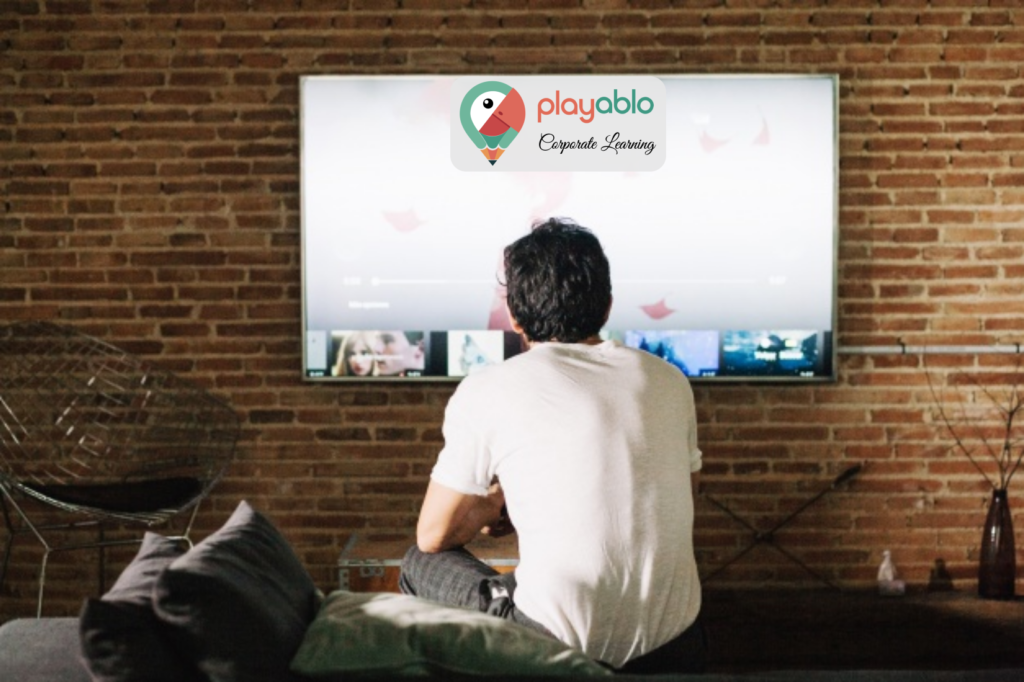Today, let’s kick things up a notch by pointing out that this blog is pretty informative. So take a print and get your highlighter. But wait! Do those yellow highlights really enhance your retention rates? No. That’s a learning myth we busted right here. As you can guess, the topic at hand in this blog is all about busting eLearning myths — regarding learning, especially digital learning. You do want your employees to have optimal corporate training experiences. After all, organizations need to stay competitive. And which is your best resource for life-long success? Your well-educated, skilled, and motivated workforce.
In fact, in this digitally-driven era, several organizations are breaking the fourth wall and welcoming the concept of online training. However, for many, eLearning is still something quite ‘new’. Remote learning is shrouded in so many myths that sometimes, it becomes difficult to discern what is true and what is false. Well, our article will help you in busting 10 of the common myths associated with eLearning.
Table of Contents
10 eLearning Myths at the Workplace
1. eLearning is Specifically Designed for Gen Y-ers

The learning habits of the tech-savvy millennial generation are indeed geared more toward digitally delivered knowledge. But this does not mean that Gen X or Baby Boomers are not equipped to handle technology. It is a preconceived notion that non-millennials find smartphones and laptops complicated. Yes, this is one of the first eLearning myths.
But this belief is not entirely true. They do understand that eLearning offers an easier alternative — giving flexible, instant, and customized access to knowledge. Since corporate online learning infuses one with the confidence to complete tasks efficiently, even senior professionals are fully capable of, equipped, and ready to take remote courses. If you do not trust us, this detailed blog will give you more insights on how to design eLearning modules for non-millennials.
2. Online Training Translates to Complex Technology
Before busting yet another of the popular eLearning myths, let’s make something obvious — technology is only a tool to aid learning. The content of your training modules determines the ‘interest’ factor in your online classes. Technology comes second. Therefore, when you design an eLearning course, give priority to creating effective content (via e learning course creation software) which connects with the learner and motivates them to enroll and complete a targeted subject.
In fact, at times, when you use complex technology, learners can get bamboozled while figuring out how to access a certain module! It is better to keep things simple and easily understandable.
3. Online Learning Means Less Interactions

Let us illustrate the above eLearning myths with an example. When you read a book or watch a movie, do you feel disengaged after a while? NO, right? As long as the story keeps you interested, you do not even know when two hours have passed. The characters in a novel are not alive and nor do the characters on-screen pop out to interact with you. You keep watching because the content is so fascinating.
You can apply the same concept to an eLearning course. When your content is gripping enough, learners will never get bored. Moreover, if your training modules are enhanced with engrossing elements like gamified quizzes or reward-based assessments, the captivating factor multiplies.
Ad: PlayAblo’s Enterprise-Grade Micro-Learning platform is built for the corporate learner. Micro-Learning, along with assessments and gamification features, ensures learning outcome measurement along with sustained engagement.
Find out more and request a custom demo!
4. eLearning Does Not Produce Measurable Results
Again, another one of our common eLearning myths. If you have targeted learning objectives, you can easily measure learner performance. For example, suppose the end goal of your corporate training module is to increase productivity. In this case, you can measure the progress of your trainees throughout the learning journey — in terms of course completion rates, performance estimates via score-based assessments, and attendance rates.
Again, when you use eLearning to impart training on topics like compliance with company rules, you can easily quantify the end outcome. Platforms like PlayAblo arrive with an analytical dashboard that enables you to gather insightful data — which can then be used to improve the course.
Ad: PlayAblo’s Enterprise-Grade Micro-Learning platform is built for the corporate learner. Micro-Learning, along with assessments and gamification features, ensures learning outcome measurement along with sustained engagement.
Find out more and request a custom demo!
5. eLearning Does Not Have the Personal Touch

According to many experts, effective learning is achieved in an environment where learners can observe others in real-time and replicate their behavior. Several corporates believe that when learning takes place in a remote setting without human presence, it can lead to boredom and demotivation. So, you get what lies in the 5th position in our list of eLearning myths, right?
Yes, once upon a time, online learning was a solitary endeavour. But the modern eLearning software comes with a gamut of features that promote collaboration –via social media, integration of live classrooms, and discussion forums. Additional elements that can help create a personal touch are team tasks and group projects, chat options, and conference/video sessions.
6. eLearning Can Break the Bank
A digitally-driven online platform might seem more expensive when compared to traditional classrooms. L&D leadership is led to believe that an investment in technology leads to additional costs. But hold on to these eLearning myths. Yes, eLearning comes with a one-time, upfront price. But consider the long-term benefits.
You no longer need to spend on instructor fees, offline venues, travel, and additional resources. In fact, within a single eLearning module, you can have as many participants as you want. But classrooms come with a size limit — which requires you to hold the same training for multiple sessions to accommodate everyone — leading to increased costs in the long run.
7. eLearning is a Standalone System

You might deliver some of your sessions online — but this does not mean that you cannot blend eLearning with other training formats. This is where the concept of blended learning comes in — you can mix and match different learning styles throughout the course.
You can think of periodical face-to-face sessions when learners can sit down with their instructors and address their doubts or give updates on their progress. You can also incorporate physical classes for practical sessions or assessments.
8. Creating Online Content is Difficult
When you decide to launch an eLearning portal, the thought of creating your own content can seem daunting. However, if you do not wish to design your own content, you can always choose to purchase off-the-shelf materials. You can even scale up your LMS to include customized content in the future.
Again, if you deploy the services of a platform like PlayAblo, you can re-use the existing legacy content that you believed were obsolete — thereby proving another of our common eLearning myths. PlayAblo’s experts go through tons of materials, like PPTs, Word files, Excel sheets, and leaflets — to curate a concise online course, segmented into mobile-optimized, easily absorbable micro-chunks. How do they do it? Check out this blog here.
9. eLearning is TOO Fast-paced

Multiple L&D leaders have held on to these eLearning myths that online learning moves at a too-fast pace. Sometimes, learners cannot keep up since they lack the option to stop an instructor mid-way and ask questions. However, eLearning, in reality, is flexible enough to adapt to one’s learning speed.
A certain subject might be covered in only a few screens, but trainees have the option to go back and re-read a piece if they want more clarity. They can also do additional research by downloading accompanying leaflets that are attached to the course. Learners can then move on to the next topic when they feel confident — and NOT when the rest of the class is ready.
10. eLearning is TOO Flexible
One of the biggest upsides of eLearning is flexibility — learners have the option to access courses at their own pace and place. This does not mean that trainees are using their time inefficiently or getting too relaxed — since there are no set deadlines or instructors. In fact, when employees are given the freedom to complete internal training as per their comfort levels, it leads to greater productivity. After all, who likes to learn when one is TOLD to learn?
Conclusion
By busting the above eLearning myths, you can understand the true benefits of this powerful methodology. Do you have any questions or opinions? Feel free to leave a comment below!







2 Comments
Comments are closed, but trackbacks and pingbacks are open.